Fracture of a thin copper plate from water hammer
The simulations on this page try to reproduce experimental results provided by V.S. Deshpande, University Cambridge. A strong pressure wave in water is created by firing a steel projectile on a piston at the end of the tube. The wave propagates through the tube and impinges onto a thin copper plate sealing the other end. Depending on the initial projectile velocity the pressure induces plastic deformation or different rupture patterns.
The experimental facility is described in debth in V.S. Deshpande, A. Heaver, N.A. Fleck, An underwater shock simulator. Royal Society of London Proceedings Series A, 462(2067):1021-1041, 2006.
Basic computational setup
Fluid
- Pressure wave generated by solving equation of motion for piston during entire fluid-structure simulation. Piston mass: 238g. The initial velocity v0 is varied to create different loading conditions with initial pressure p0.
- Full water shock tube of 1.3m length, 64mm diameter considered in fluid. 1d simulations used to provide proper flow field for coupled 3d simulations.
- Modeling of water with stiffened gas equation of state with %$\gamma=7.415, p_\infty=296.2\,\rm MPa$%
- Multi-dimensional 2nd order upwind finite volume scheme, negative pressures from cavitation avoided by energy correction
- AMR base level: 350x20x20, 2 additional levels, refinement factor 2,2.
- Approx. 1.2M cells used in fluid on average instead of 9M (uniform)
- An unsigned distance function is used to allow the simulation of the rupture event.
Solid with SFC
- Copper plate of 0.25mm, J2 plasticity model with hardening, rate sensitivity, and thermal softening, cohesive interface model
- Solid mesh: 4675 nodes, 8896 elements
- 12 nodes 3.4 GHz Intel Xeon dual processor, Gigabit ethernet network, ca. 800h CPU to t=1ms
- Source codes: [fluid codes] [solid codes]
p0=34MPa, v0=-22.94m/s
| Pressure traces | Plate deformation |
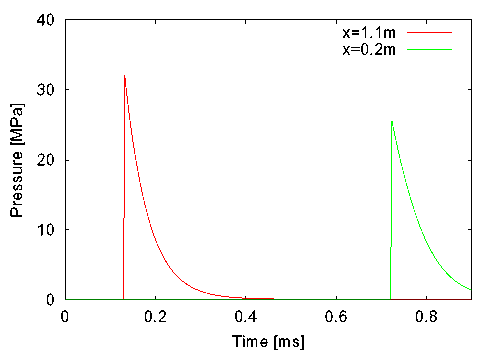 | 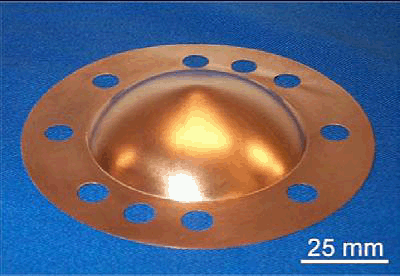 |
p0=64MPa, v0=-43.18m/s
| Pressure traces | Plate deformation |
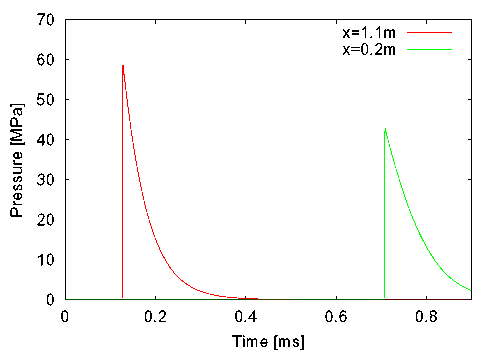 | 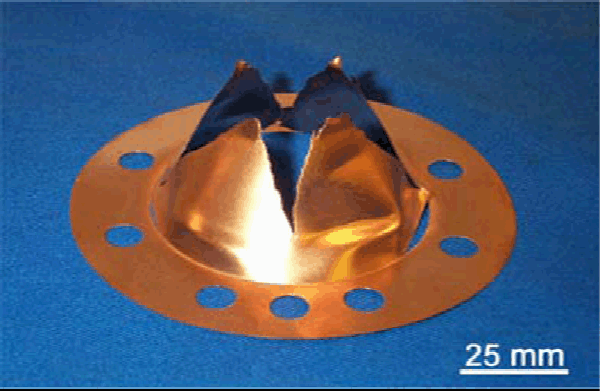 |
p0=88MPa, v0=-59.38m/s
| Pressure traces | Plate deformation |
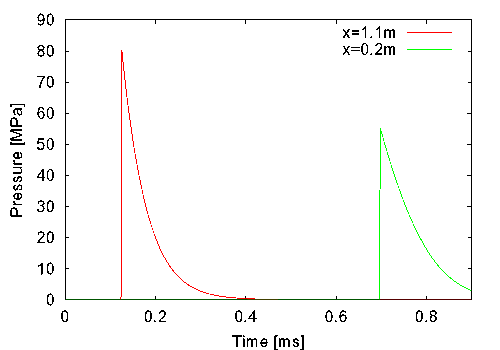 | 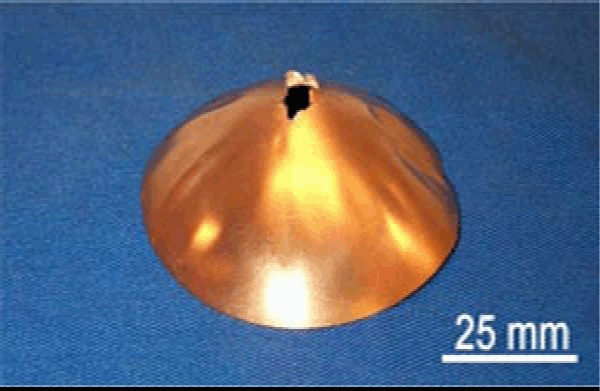 |
p0=130MPa, v0=-87.72m/s
| Pressure traces | Plate deformation |
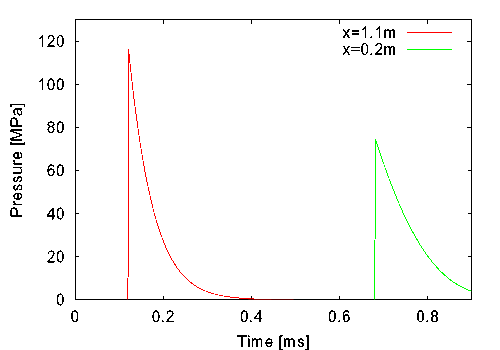 | 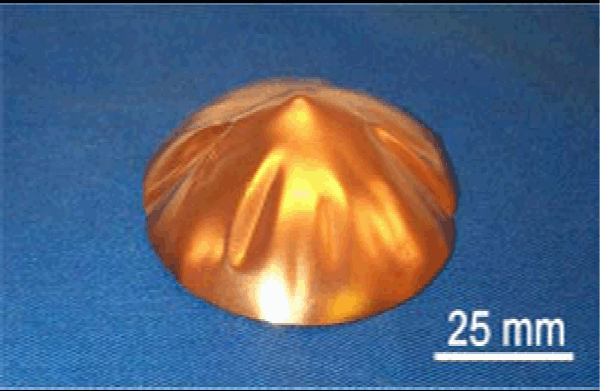 |
p0=173MPa, v0=-116.73m/s
| Pressure traces | Plate deformation |
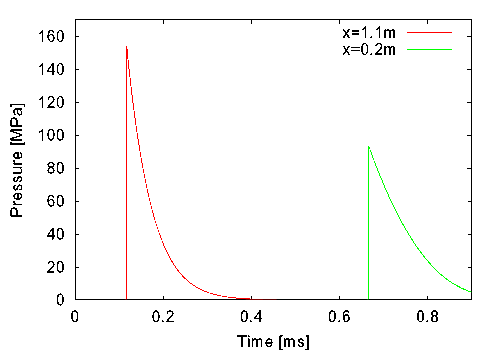 | 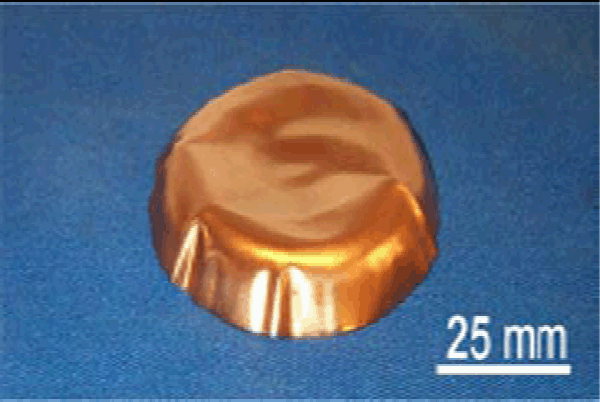 |
--
RalfDeiterding - 21 Apr 2008










